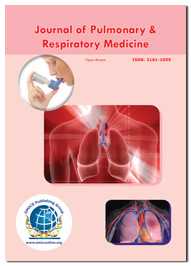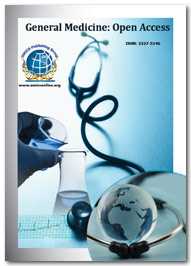Theme: Optimizing research strategies for breakthrough innovations in Lung disorders treatment
Lung-2015
We invite lung expertise, researchers, professors, scientific communities, therapists, students, business professionals and executives to attend the International Conference and Exhibition on Lung Disorders & Therapeutics, which is to be held on July 13-15, 2015 at DoubleTree by Hilton, Baltimore, USA. The conference will be organized around the theme “Optimizing research strategies for breakthrough innovations in Lung disorders treatment”.
This conference will encourage innovative ideas and advanced diagnostic approaches towards the lung disease. It will share recent advancements and knowledge share about the lung disorders and treatment strategies. The participant companies can display their product to gain the networks and to promote their upcoming new strategies for the future era.
Number of non-institutionalized adults with diagnosed chronic obstructive pulmonary disease: 6.8 million, chronic bronchitis: 8.7 million, emphysema: 4.1 million. American societies awarded: $275,000 supporting for lung disorders. Associations awarded over $11.5 million for supporting research aimed at improved treatment and a cure for lung cancers, including non-small cell and small cell lung cancers.
Lung 2015 Conference aims at gathering the audience from all the major parts of the World with a goal to enhance the scientific knowledge by exploring the latest advancements in the related conference field area. The conference will include explicit keynote and plenary sessions delivered by the distinguished researchers, scientists and honorary lecturers working in the field of pulmonary research & therapeutics. Lung 2015 will encourage the participation of the eminent professors, researchers and students in all areas of lung disorder & therapeutics and will provide an international forum for the dissemination of original research results, new ideas and practical development experiences concentrating on the scientific development.
OMICS international organizes 300+ International Conferences every year across USA, Europe & Asia with support from 1000 more scientific Societies and publishes 400+ Open Access Journals which contains over 30000 eminent personalities, reputed scientists as editorial board members. For more..
About Conference Tracks
Refers to a state where the functioning of lung including the respiratory tract is hampered by some infectious microbes or any environmental components. An infection of this type can be caused due to Bacterial and Fungal lung infections which is normally further classified as an upper respiratory tract infection (URI or URTI) or a lower respiratory tract infection (LRI or LRTI). Lower respiratory infections, such as pneumonia, tend to be far more serious conditions than upper respiratory infections, such as the common coldand flu. Among the various respiratory and lung disorders, tonsilitis and sinusitis is the common which is caused due to the infection of tonsils or the associated membrane bodies. Pathogenic infections are the caused due to various bacteria’s, viruses and fungus inhabitants in the human body. Cigarette smoking is the leading cause of COPD, whose long-term exposure to other lung irritants, such as air pollution, chemical fumes, or dust will create a deadly condition for the patient.
Major Lung Disorders include asthma, which will cause a condition where the airways are persistently inflamed, and may occasionally spasm, causing wheezing and shortness of breath. Allergies, Chronic obstructive pulmonary disease (COPD): Lung conditions defined by an inability to exhale normally, which causes difficulty breathing. Emphysema: Lung damage allows air to be trapped in the lungs in this form of COPD. Difficulty blowing air out is its hallmark. Cystic fibrosis: A genetic condition causing poor clearance of mucus from the bronchi. The accumulated mucus results in repeated lung infections. Acute bronchitis: A sudden infection of the airways, usually by a virus. Sleep problems also one of lung disorder.
Track 3: Pulmonary Disease: Tuberculosis
Pulmonary Tuberculosis (in the lungs) is contagious. It spreads when a person who has active tuberculosis symptom and causes breathes out air that has the TB bacteria in it and then another person breathes in the bacteria from the air. An infected person releases even more bacteria when he or she does things like cough or laugh. We can cure pulmonary tuberculosis through diagnostics and treatment also control Vaccination and Control
Track 4: Pulmonary Disease: Pneumonia
Pneumonia is an inflammatory condition of the lung affecting primarily the microscopic air sacs known as alveoli. It is usually caused by infection with viruses or bacteria and less commonly other microorganisms, certain drugs and other conditions such as autoimmune diseases. People with infectious pneumonia often have a productive cough, fever accompanied by shaking chills, shortness of breath, sharp or stabbing chest pain during deep breaths, and an increased rate of Giving treatment precautions and care one of the method for pneumonia. Using Vaccination we can Control
Track 5: Lung Cancer and Treatment Strategies
Lung Cancer and Treatment Strategies Treatment of lung cancer refers to the use of medical therapies, such as surgery, radiation, chemotherapy, and palliative care, in an attempt to cure or lessen the adverse impact of malignant neoplasms originating in lung tissue. If lung cancer is suspected as a result of a screening procedure, a small piece of tissue from the lung must be examined under a microscope to look for cancer cells. Called a biopsy, this procedure can be performed in different ways. In some cases, the doctor passes a needle through the skin into the lungs to remove a small piece of tissue; this procedure is often called a needle biopsy. National Cancer Institute’s list of comprehensive cancer centers. The NCI recognizes certain cancer centers as NCI-designated Cancer Centers or NCI comprehensive Cancer Centers. An institution that has earned the distinction of being a NCI Cancer Center or a NCI Comprehensive Cancer Center meets the highest standards of care, research, and treatment.
Track 6: Respiratory Tract and Associated Defense Mechanisms
Respiratory Tract and Associated Defense Mechanisms Airway" redirects here. For an aerial route taken by airplanes, see Airway (aviation). For other uses, see Airway (disambiguation)In humans, the respiratory tract is the part of the anatomy involved with the process of respiration. Breathing is a process of getting oxygen into the lungs and carbon dioxide out of the lungs. Respiration is a process of acquiring energy from the breakdown of glucose in living cells. Alveolar Sacs are tiny ducts that connect the respiratory bronchioles to alveolar sacs, each of which contains a collection of alveoli (small mucus-lined pouches made of flattened epithelial cells).
Track 7: Biological and Pathological Effects
X-Ray and Echocardiogram are advanced techniques to diagnose and identify lung cancer. Pulmonary Function Testing (PFT) is another test to detect lung cancer symptoms. This is a medical procedure involving internal examination, biopsy, and/or resection of disease or masses within the pleural cavity and thoracic cavity Thoracoscopy may be performed either under general anaesthesia or under sedation with local anesthetic. Surgical biopsy was the standard way to diagnose lung cancer. Wearing appropriate masks and monitoring exposure to irritants in certain work environments (for example, mining and jobs that involve working with asbestos or metal dusts) are important precautions to take. COPD follows a progressive course causing death either from respiratory failure or complications from its associated diseases, which include coronary artery disease, lung cancer, and stroke, smoking cessation (colloquially quitting smoking) is the process of discontinuing tobacco smoking. Tobacco contains nicotine, which is addictive, making the process of quitting often very prolonged and difficult we can control through vaccination and prevention cure.
Track 8: Advanced Diagnostic Techniques for Lung Disorders
Tobacco smoking is the practice of burning tobacco and inhaling the smoke (consisting of particle and gaseous phases). (A more broad definition may include simply taking tobacco smoke into the mouth, and then releasing it, as is done by some with tobacco pipes and cigars. Small cell lung cancer is a disease in which malignant (cancer) cells form in the tissues of the lung. There are two main types of small cell lung cancer. Smoking increases the risk of small cell lung cancer. Signs and symptoms of small cell lung cancer include coughing, shortness of breath, and chest pain. Non-small cell lung cancer is a disease in which malignant (cancer) cells form in the tissues of the lung.There are several types of non-small cell lung cancer.Smoking increases the risk of non-small cell lung cancer.Drugs for Tuberculosiswith tuberculosis, you must take antibiotics for at least six to nine months. The exact drugs and length of treatment depend on your age, overall health, possible drug resistance, the form of TB (latent or active) and the infection's location in the body.
Track 9: Prevention, Cure and Control Management of Lung Disorders
Respiratory system does, delivering air to the lungs, bringing oxygen into the body, and expelling the carbon dioxide back into the air. Understanding the structure and intricacies of the respiratory system is vital to human anatomy of respiratory organ. The respiratory system is made up of more than just the lungs; it also includes your nose, throat, larynx, windpipe, bronchi, alveolar ducts, and respiratory membrane. Bronchi and alveolus are the major parts of respiratory system.
Track 10: Novel and Futuristic Research Aspects and Clinical Trials
Digital Cancer Pathology: The development of small molecule inhibitors of growth factor receptors, and the discovery of somatic mutations of the tyrosine kinase domain, has resulted in new paradigms for cancer therapy. Digital microscopy is an important tool for surgical pathologists. Clinical biomarkers are measurable indicator of the severity or presence of some disease state. More generally a biomarker is anything that can be used as an indicator of a particular disease state or some other physiological state of an organism. Genetic Defects disorders may or may not be heritable, i.e., passed down from the parents' genes. In non-heritable genetic disorders, defects may be caused by new mutations or changes to the DNA. In such cases, the defect will only be heritable if it occurs in the germ line. The same disease, such as some forms of cancer, may be caused by an inherited genetic condition in some people, by new mutations in other people.
Conference Highlights
- Lung and Respiratory Metabolism
- Lung and Respiratory Infections
- Lung Disorders
- Pulmonary Tuberculosis
- Pulmonary Disease: Pneumonia
- Lung Cancer and Treatment Strategies
- Respiratory Tract and Associated Defence Mechanisms
- Biological and Pathological Effects
- Advanced Diagnostic Techniques for Lung Disorders
- Prevention, Cure and Control Management of Lung Disorders
- Novel and Futuristic Research Aspects and Clinical Trials
To share your views and research, please click here to register for the Conference.
To Collaborate Scientific Professionals around the World
| Conference Date | July 13-15, 2015 | ||
| Sponsors & Exhibitors |
|
||
| Speaker Opportunity Closed | Day 1 | Day 2 | Day 3 |
| Poster Opportunity Closed | Click Here to View | ||
Useful Links
Special Issues
All accepted abstracts will be published in respective Our International Journals.
- Journal of Pulmonary & Respiratory Medicine
- Journal of Mycobacterial Diseases
- Journal of General Medicine: Open Access
Abstracts will be provided with Digital Object Identifier by






